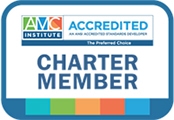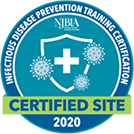Volunteer leaders are the backbone of any association. They guide strategic direction and represent the voices of members, playing a crucial role in the health and longevity of the organization. However, challenges arise when a board member's term ends or when a president steps down unexpectedly. Without a clear succession plan, leadership transitions can become disruptive and pose significant risks.
That’s why succession planning isn’t just a best practice—it’s a necessity. Too often, associations take a reactive approach to leadership transitions, scrambling to fill vacancies instead of preparing future leaders. This can lead to:
- Gaps in institutional knowledge
- Unclear roles and expectations
- Reduced board effectiveness
- Missed opportunities for growth
A proactive succession plan ensures leadership continuity, strengthens governance, and builds a pipeline of capable, confident volunteers. Let’s walk through the process of setting up that plan:
- Start with a Leadership Needs Assessment: Define the skills, experience, and characteristics required for your association's leaders. Determine if you need someone with financial expertise, event planning experience, or a deep understanding of your member base. Use this assessment as a benchmark to identify future candidates.
- Create Clear Job Descriptions: Each leadership role should have a well-defined scope that includes responsibilities, time commitments, and term limits. This clarity sets expectations and helps potential candidates decide if the role is suitable for them.
- Identify and Develop Emerging Leaders: Look for high-potential volunteers who are already actively engaged, such as committee chairs, task force members, or contributing volunteers. Provide leadership training, mentorship opportunities, and “stretch” assignments to prepare them for board service.
- Document Your Processes: Keep detailed records of leadership timelines, role transitions, and onboarding procedures. Maintaining a living document makes it easier to onboard new leaders and ensures continuity, even during unexpected changes.
- Communicate Openly and Often: Succession planning should involve ongoing conversations among staff, board members, and volunteers. Encourage current leaders to mentor their successors and be transparent about upcoming leadership opportunities.
Succession planning isn’t just about filling roles—it’s about building a resilient, future-focused organization. When your volunteer leaders feel prepared and supported, your entire association benefits.




